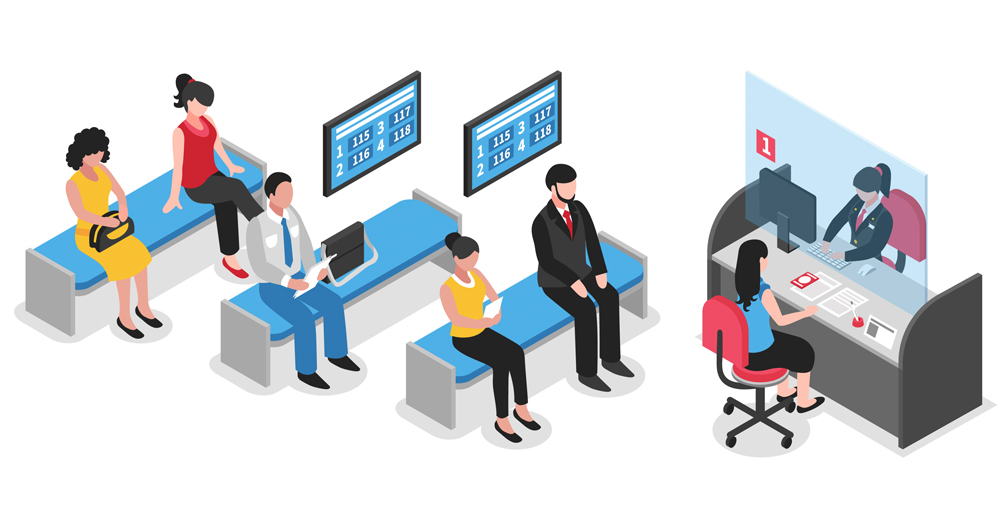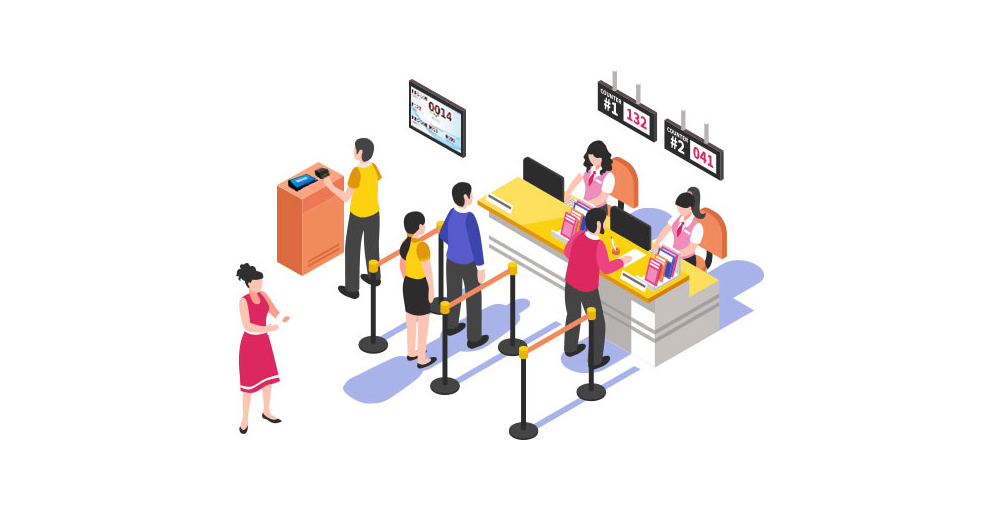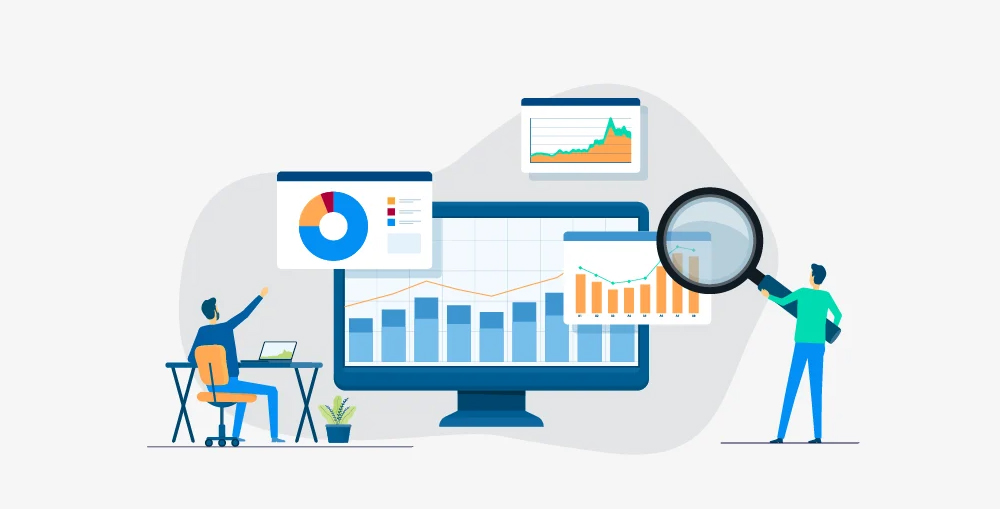The customer flow management is the most crucial aspect of customer journey. A good customer interaction and seamless customer journey determines the customer satisfaction and happiness. Happy and satisfy customers tend to be loyal hence provide a stable foundation where business can build up their growth and achieve their long-term goals. The important thing here to understand is that scaling and growth are two different processes. The business growth is a linear process and happens on a steady pace, while scaling means a sudden boost in revenue without exponential raise in resources. Businesses achieve growth by investing more resources, developing new products/services and investing in infrastructure and business processes. However, scaling happens when business effectively optimize the resources in hand and without making huge investments, businesses achieve higher profitability and generate more revenue. The scaling is achieved by implementing new strategies, improving processes and methodologies on a larger scale to achieve high-performance operations which drive more revenue and sales.

What is the Difference between Growth and Scaling?
If we compare the growth and scaling, the scaling tends to be the most desirable route to achieve long-term business growth. Businesses in Dubai, Sharjah, Abu Dhabi and other parts of UAE are well-aware of the fact that opening up new branches, hiring more staff, enduring the R&D for new products/services could be a very expensive and lengthy ordeal. Therefore instead of that businesses prefer to scale up. Think of a business such as a SaaS service provider, the initial cost of building up a SaaS product, acquiring infrastructure and hiring the relevant staff is a really big deal. However once the business is established the same businesses can serve thousands of customers while adding thousand more without increasing much of their expenses. Thus that means the expense remains almost same while the business started serving double or tripper number of customers which boost their revenue and also profit margins. Therefore scaling is one of the best route to achieve long-term growth. In this blog we will discuss how by simply optimizing the customer flow management a business can greatly boost revenue and drive growth.

Understanding the Customer Flow Management
The understanding and mastery of customer flow management is essential for scaling business growth. A queue management system plays a pivotal role in enhancing customer flow management, but before we discuss that it is important to understand the basics of customer flow management. By definition the customer flow management is a strategic planning and implementation of measures and protocols to effectively and efficiently manage the customer movements and interactions within business premises. The primary objective of customer flow management is to improve customer journey and enhance customer experience which is essential for higher customer satisfaction. The customer flow management helps businesses removing congestion, delays, avoiding long wait time and ensuring a smoother and seamless experience throughout the customer journey. Businesses often focus a lot on customer flow management as it guarantees higher customer satisfaction, better operational performance and profitability which ultimately translates into growth.

Key Strategies to Optimize Customer Flow Management with Queue Management System
A queue management system is a perfect tool to enhance customer flow management. A queue management system is a digital solution consisting of hardware and software components which are exclusively designed to enhance various processes involved in customer flow management. A queue management system greatly improves customer experience, it streamlines customer flow, automates several processes and offer useful features for service staff. Collectively all these features greatly reduce customer wait time and improve service quality. A queue management system is capable of completely transforming the service centers. It offer better visibility, monitoring, real-time queuing data, engaging customer waiting experience and a satisfactory customer journey which help businesses to be able to serve more customers without adding more counters or opening up new branches or investing huge amounts of hard-earned profits to expand physically.

Here are key strategies to optimize customer flow management by deploying an efficient queue management system:
- Streamline Physical Space: A queue management system is a great tool to fully leverage the physical space you have. It helps guiding customers to the right counter, providing them real-time queuing updates in the waiting areas and making audio-visual announcements while eliminating congestions, crowd formation and typical waiting line problems.
- Digitalization and Automation: A queue management system offers digital interaction and enable customers to sign-in to virtual queues using on-site self-service ticket dispensing kiosks, mobile applications, web portals, QR Codes and much more. It automatically route customers to the least wait time queues while directing them to the required service counter.
- Personalized Customer Experience: A queue management system can automate the process of identifying customers and detecting their priority while automatically managing their route as per the queuing policy. A queue management system can also offer secure authentication methods such as Emirates ID scanning, biometrics, QR code and various other methods.
- Data-Driven Insights: A queue management system can produce a wealth of valuable business intelligence data and insight by automatically collecting statistical and analytical data from each touch points. It stores historical data and provides in-built analytical tools which help management extract actionable reports and integrate insights to their decision making process.
- Staff Empowerment: A queue management system offers various dashboard for administration, management and for service agents. It also offers innovative features to aid staff in pre and post-service tasks while expediting the service delivery process. A queue management system can accurately capture various employee KPIs which help in better human resource management and help HR in developing effective training programs to empower staff.
A queue management system also offers customization which enables businesses to build a tailored solution as per their unique needs. Furthermore businesses can also integrate the queue management system with various other tools, systems, databases and central information system to develop more effective, efficiency and innovative features. A queue management system is an ultimate tool to enhance and optimize the customer flow management while driving growth by scaling and boosting performance.

How to Measure the Effectiveness of a Queue Management System?
If you are a business operating in Dubai, Sharjah, Abu Dhabi or any other part of UAE you must be aware of a wide variety of queue management systems available in the market. This could sometime cause confusion and made it difficult for the managers and decision makers to choose the right solution as per their needs. However with a few very simple and easy-to-understand metrics you can easily measure the effectiveness and impact of a queue management system on your operations, customer flow management and customer satisfaction. Here are a few KPIs or Key Performance Indicators which can be used to measure and quantify the impact of a queue management system:
- Customer Wait Time: A reduction in customer wait time is a clear indicator of the success of your queue management system. This means if one counter was able to serve 20 customers in a day would now be able to serve, let say 30 or even more customers in a single shift.
- Improved Service Delivery Process: The service delivery process involves various aspects, but majorly you can monitor the average service delivery time and compare it with the service delivery time before deploying the queue management system.
- Customer Satisfaction or NPS Score: Businesses can integrate a customer satisfaction survey, customer happiness meter, rating scale or NPS feedback system via tabletop feedback screens. The customer happiness directly reflect the positive impact of queue management system.
- Employee Performance KPIs: A queue management system can accurately monitor several employee performance KPIs for the service staff. Improvements in those KPIs is a direct indicator of the positive impact of the queue management system.
Regularly monitoring these metrics can provide you a deeper insight to the impact on deploying a queue management system on various aspects of your service center such as employee performance, customer satisfaction, and overall profitability and progress.

Can Small Businesses also Benefits from Optimizing Customer Flow Management?
There is a common misconception high-end software and advanced solutions like a queue management system are only suitable for large businesses, enterprises and organization. This perception is majorly due to another misconception which is that inertly such solutions are expensive. However, that is not true, a queue management system is a very cost-effective solution offering extraordinarily higher ROIs. Therefore a queue management system is effective and beneficial for every business regardless of the size, type or industry. In fact a queue management system is an excellent solution for a small business which enables them to achieve higher operational performance while improving customer satisfaction and happiness. A queue management system helps improving customer flow, minimizing customer wait time, boosting service staff performance and raising customer satisfaction. All these are essential ingredients for a small businesses who is looking to build loyal customer base and are competing with large businesses. Businesses can leverage the potential of a queue management system to achieve sustainable growth.

Conclusion
Deploying a queue management system is not just a strategic move to optimize customer flow for scaling business growth. But it is a most vital and essential step towards achieving long-term and sustainable business growth. Scaling business means leveraging the full potential of existing resources to maximize the revenue without proportionally adding resources/expenses. A queue management system is capable of transforming the entire service center while boosting the efficiency to many folds. It automates customer journey and customer flow, it helps service agents boosting productivity and performance. Furthermore businesses can also monitor and measure the efficacy and impact of a queue management system by monitoring some very simple key metrics. A queue management system is a very cost-effective solution offering extraordinary ROIs which makes it equally effective for all types and sizes of businesses.
Especially for small businesses it can greatly boost their operational performance and capabilities enabling them to serve more customers and generate more revenue. If you want to learn more about the subject or if you want our help to develop a custom queue management system for your business, please feel free to contact us through our Contact Us page or leave a comment in the comment box below and we will get in touch with you soon.







